Credit: Dr. iCow
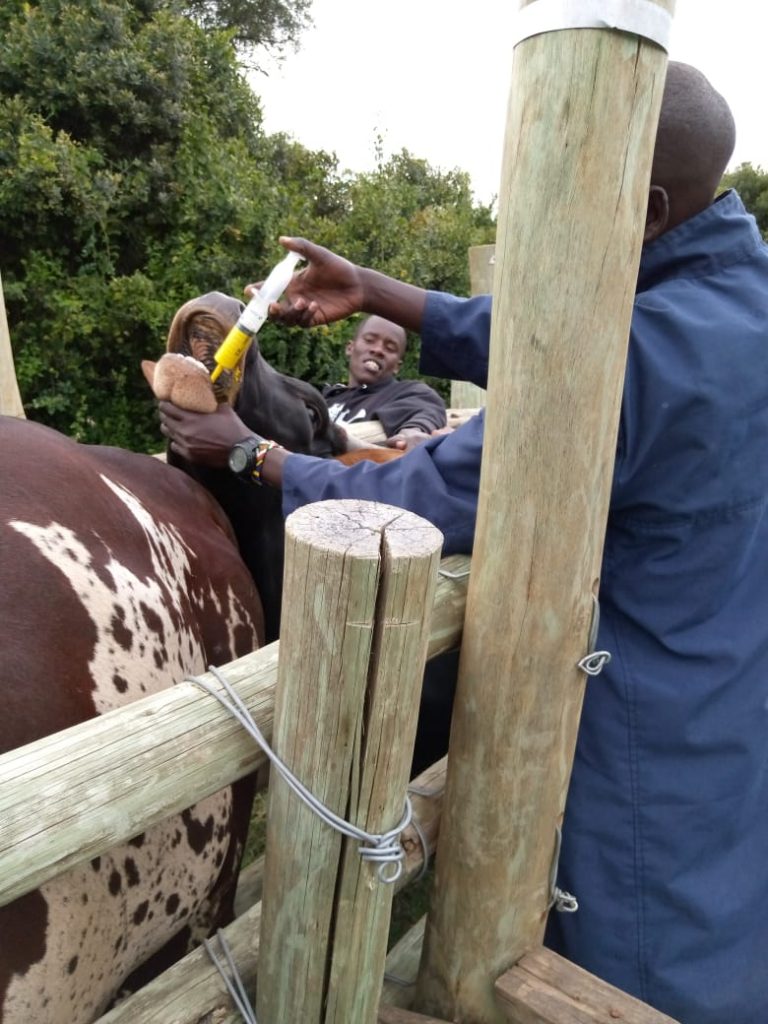
Worms can be grouped as round worms, tape worms and flukes. They can be controlled by good feeding and watering practices and regular use of effective broad-spectrum anthelmintic or dewormers.
In organic herds, it is not permitted to use medicine for prevention of diseases but parasite infections should be prevented through good management practices, such as clean grazing areas and making sure that the young calves are also fed other feed and can have access to milk as long as possible, so that they do not rely heavily on grazing, and by not mixing calves of different age groups in the same flock. Treatment should depend on worm counts, as recommended by the local veterinarian, and the general state of health of the animal.
Deworming dairy cows at early lactation consistently increases milk yields more than any other time of treatment.
If your livestock have worms, it is important to make the right choice of the dewormers as some are not recommended for treating pregnant animals.
When de-worming livestock it is important to ensure the right worms are being treated with the right medication in the right dosage. Always consult a veterinarian for advice in determining which dewormer is best to use in your livestock.
It is advisable to deworm pregnant livestock after the first trimester. For cows avoid deworming the first 3 months of pregnancy.
In sheep and goats the critical period to avoid deworming is in the first 2 months in order to avoid abortions and birth defects in lambs and kids. Some dewormers cannot be used just before, during and just after breeding.
Animals of different weights require different dosages of medications, thus knowing and recording an animals weight is not only good for general management practices but also to enable you administer medications safely and cost effectively.
Deworm your animals 1 month or 30 days before artificial insemination –A.I. or natural service. Dewormers have conditions of use due to their toxic effects on the developing fetus. Some dewormers are restricted during the first trimester e.g. albendazole based products.
It is advisable to deworm during morning hours after milking and deworm all your livestock on the farm at the same time.
Observe the manufacturer’s recommend withdraw periods for milk and meat after deworming.
Weighing cows for de-worming
To get the correct weight of your cows, measure them with a weigh tape, readily available from most agro dealers. This is a tape measure that is calibrated to give you a chest reading that is associated with an animals weight. There are different weight tapes for different breeds of cattle.
To get the correct weight, do the following:
a) Measure the cow with it’s head up. When the head is down the chest expands and you will get the wrong measurement.
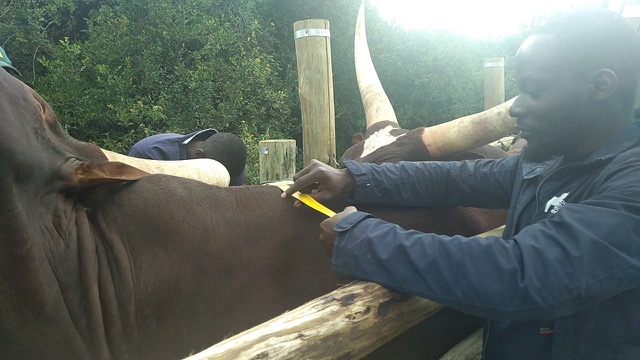
(b) Measure the heart girth region just behind the shoulders, not the abdomen
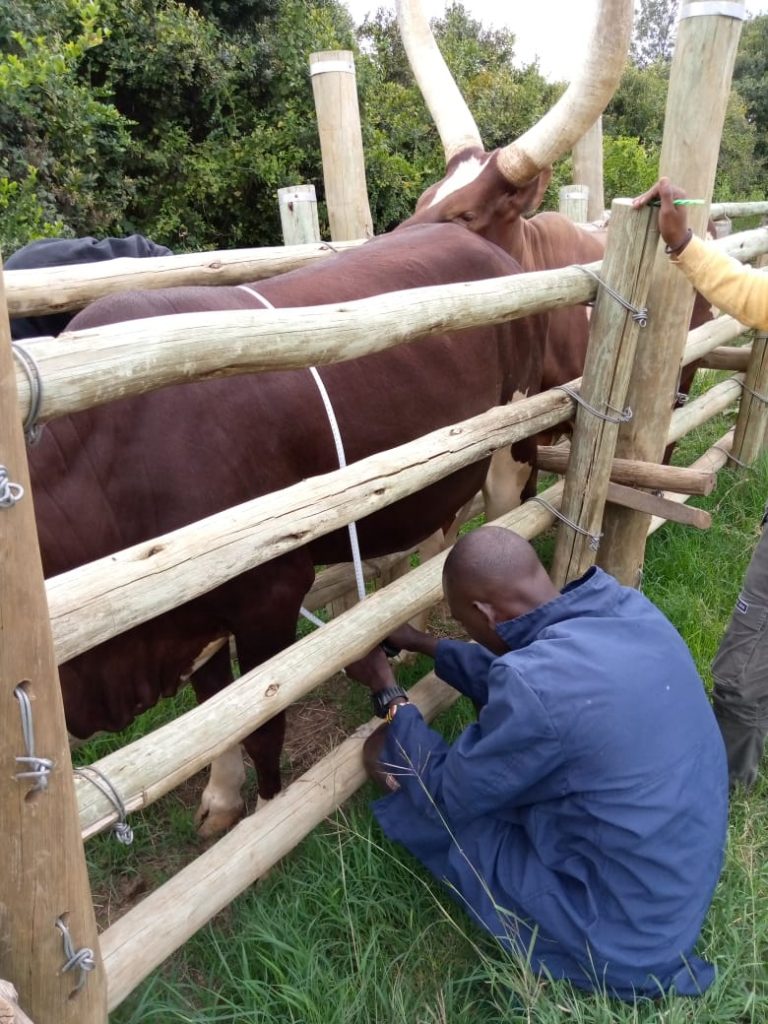
c) Make sure the tape touches the animal and is not too loose nor too tight as this will give a wrong reading.
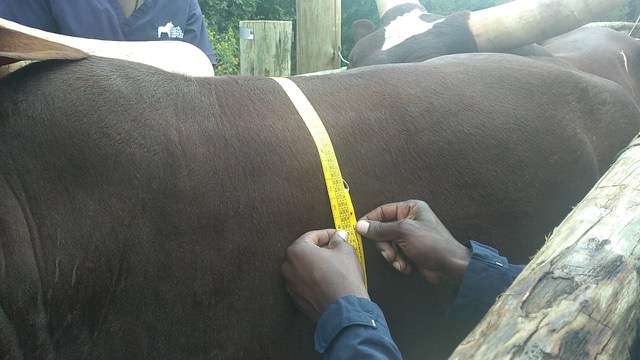
Please read the product’s label, understand and follow the manufacturer’s instructions. Do not under dose or over dose when administering a dewormer.
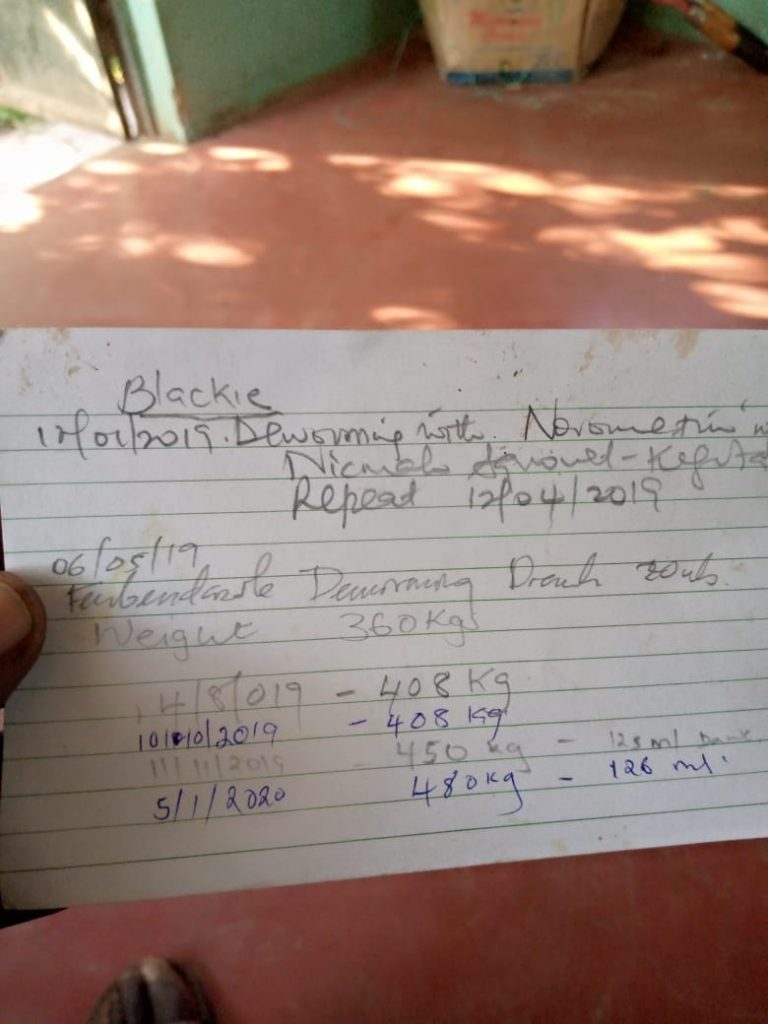
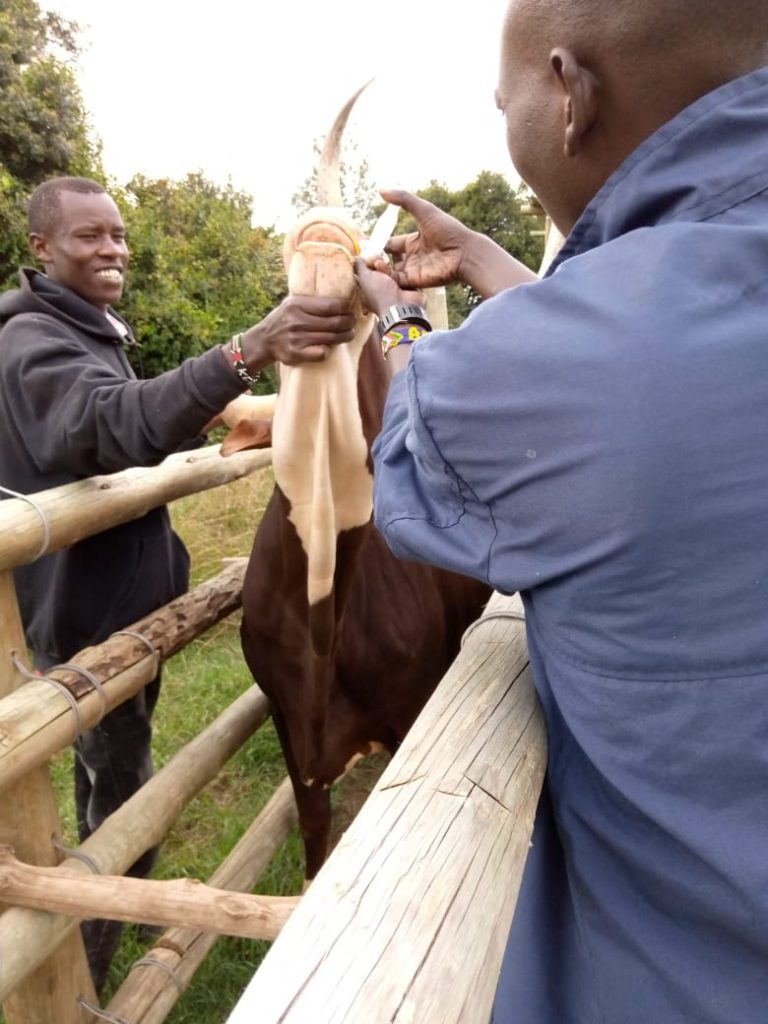
Restrain the animal properly to avoid unnecessary struggles and injuries. Hold cows neck up straight and slowly feed the worming medicine into the side of its mouth. Rub often to allow the cow to swallow. Do not administer the medicine quickly or you may choke the cow. If the medicine gets into the lungs of the cow it may get pneumonia. Be careful.
Ensuring the right dosage is used is both economical and efficient. The wrong dosage may result in ineffective treatment. Overdosage is a waste of your money.